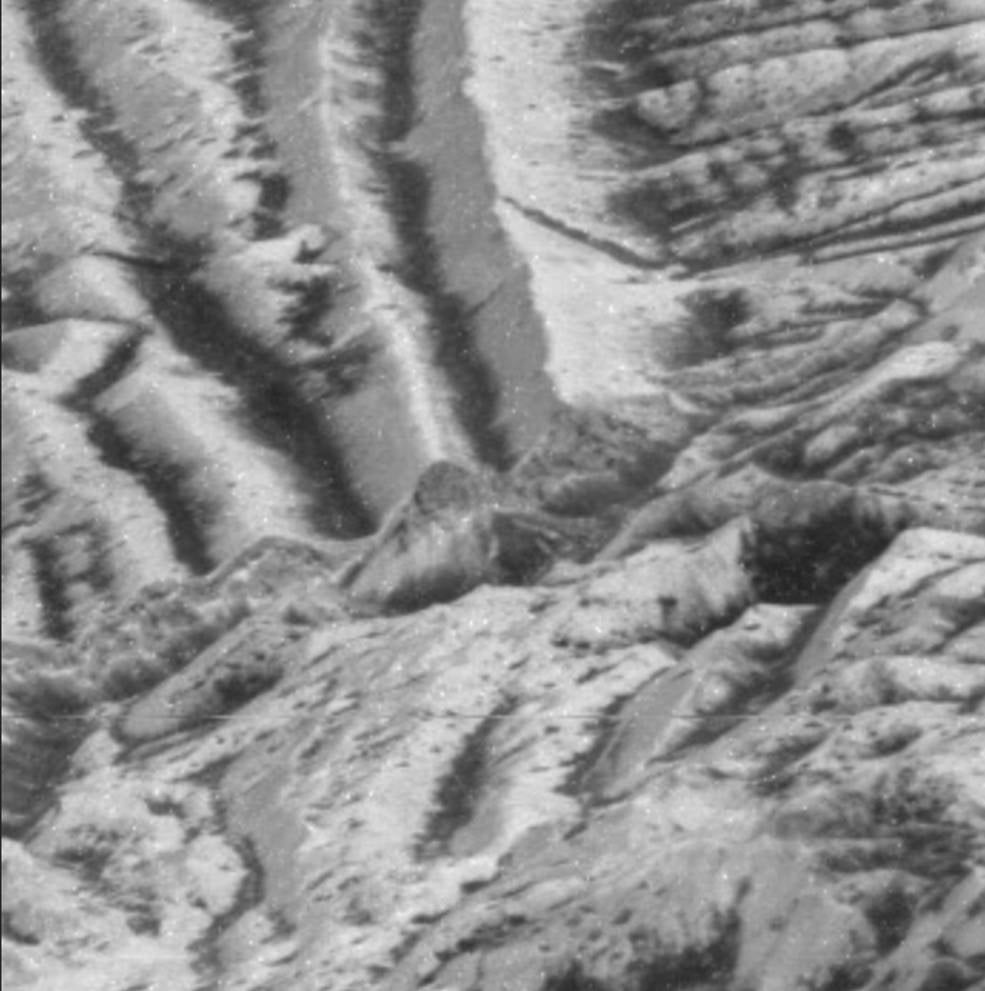Astronomers have modelled the way small celestial impacts have steadily shaped and churned the icy surface of Jupiter’s moon Europa. Importantly, the new study identifies shallow places on the moon’s surface where evidence of life — should it exist within Europa’s subsurface ocean — can persist.
Jupiter’s moon Europa boasts a global ocean, albeit one covered in a thick layer of ice — same for Saturn’s moons Titan and Enceladus. All three of these moons are considered top candidates for where life could exist elsewhere in the solar system. Their oceans are kept warm and liquid by strong tidal forces exerted by their parent planets, despite the moons being located far outside the solar system’s habitable zone. Thanks to key chemical processes occurring within the waters, it’s plausible that some form of life could exist there, but that remains an unanswered question.
Eventually, scientists might be able to send life-hunting aquatic probes to investigate these dark subterraneans seas, but traces of this presumed life might actually be accessible from the ice above. Tectonic forces and gigantic water plumes on Europa could be transporting salty subsurface water — and key biosignatures — directly to the surface. All we have to do is send a lander to the surface, where it would, very carefully, search for these clues.
But there’s a problem, and that problem has to do with Jupiter itself. As a NASA press release points out, charged particles from the gas giant are trapped and boosted by its magnetosphere. This radiation could be erasing signs of life on the surface, as the charged particles would snap the bonds of molecules produced by biological processes.
That said, a NASA study from 2018 suggested some biosignatures, shielded by Europa’s ice, might persist at depths between 4 to 8 inches (10 to 20 cm) beneath the surface. That should be no problem for a future lander equipped with a drill, but, as new research published in Nature Astronomy points out, that drill will need to be longer than we thought, but not by much.

The new paper takes another consideration into account: impacts with small celestial bodies. On Europa and other similar moons, steady impacts are responsible for “impact gardening,” a continual process in which collisions reshape the uppermost surface layer. The resulting churning action pulls material down from the surface, but it also delivers material to the surface — including, theoretically, materials packed with biomolecules. Exposed to Jupiter’s radiation, these biosignatures would be annihilated. That said, “no comprehensive estimate of the effect of [impact] gardening has yet been determined for Europa,” according to the study, led by planetary scientist Emily Costello from the University of Hawaii at Manoa.
By presenting a new impact gardening model of Europa, the researchers have provided a fuller picture of conditions on the moon’s surface and how they’re influenced by impacts. It’s also the first study to take secondary impacts into account, that is, the influence of falling debris caused by the initial impact.
As the research shows, impact gardening on Europa is a moonwide phenomenon. On average, the top 30 cm of the surface has churned over the past several tens of millions of years. This has had the effect of exposing the top layer to that dreaded Jovian radiation.
This might seem like bad news for the hunt for life, but there is a silver lining, as the same research points to places in which impact gardening hasn’t had as much of an, um, impact.
“If we hope to find pristine, chemical biosignatures, we will have to look below the zone where impacts have been gardening,” Costello explained in the NASA release. “Chemical biosignatures in areas shallower than that zone may have been exposed to destructive radiation.”
She is specifically referring to young craters and regions susceptible to slope movement, the latter of which are known to occur in Europa’s mid to high latitudes. “At these locations, gardening has not had sufficient time to endanger a column of biomolecules on Europa,” as the scientists write in their study.
This is the “first time the effects of impact gardening have been considered when predicting where on Europa biomolecules might be found and the first time impact gardening has been modelled to consider Europa’s unique icy surface and the impactor population in the Outer Solar System,” Costello noted in a Planetary Science Institute release.
Astronomer Rebecca Ghent from the Planetary Science Institute, a co-author of the study, said the new work “provides some valuable new constraints on where to look if we hope to find the evidence of life.”
The new research could have a bearing on NASA’s Europa Clipper mission, which is scheduled to launch in 2024. It could influence decisions about what instruments to put on the probe and where the spacecraft should direct its observations. The Europa Clipper mission likely won’t prove that life exists (or not) on Europa, but it could lead scientists to a deeper understanding of its potential for habitability and an improved sense of where evidence of life might exist on this amazing Jovian moon. And by doing so, the mission could pave the way for a future lander equipped with a 0.30 m-long drill.
